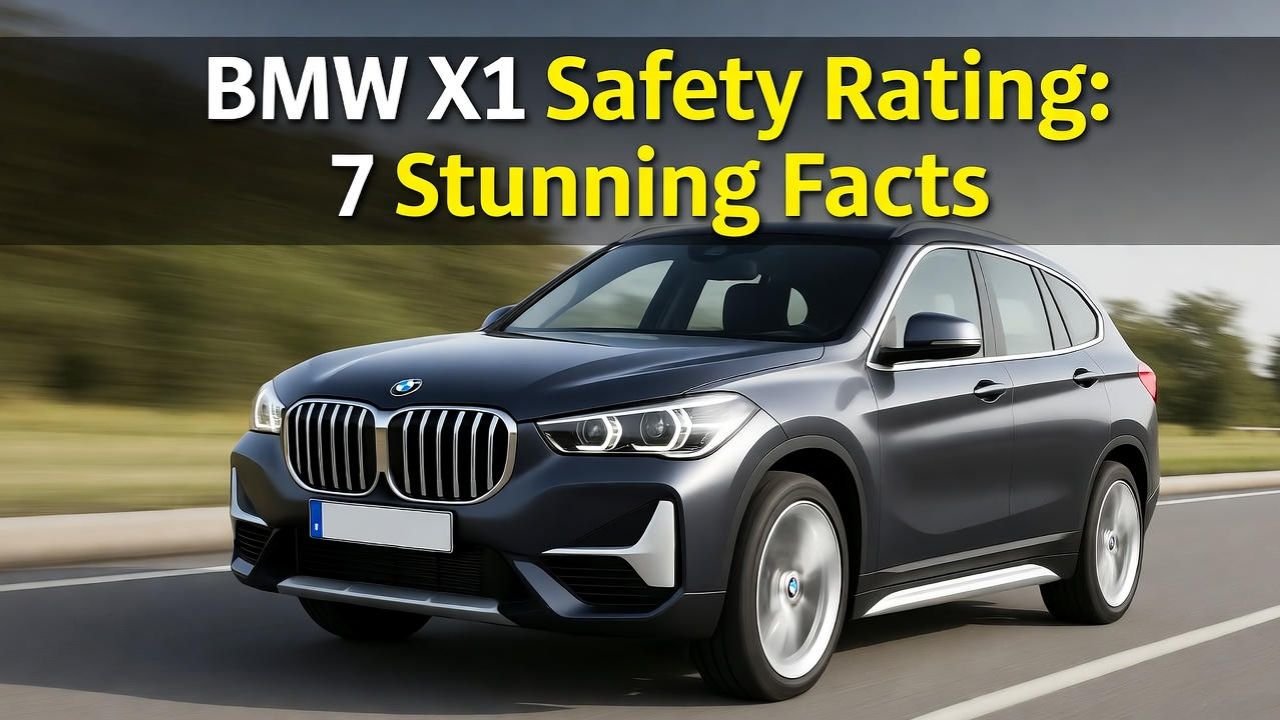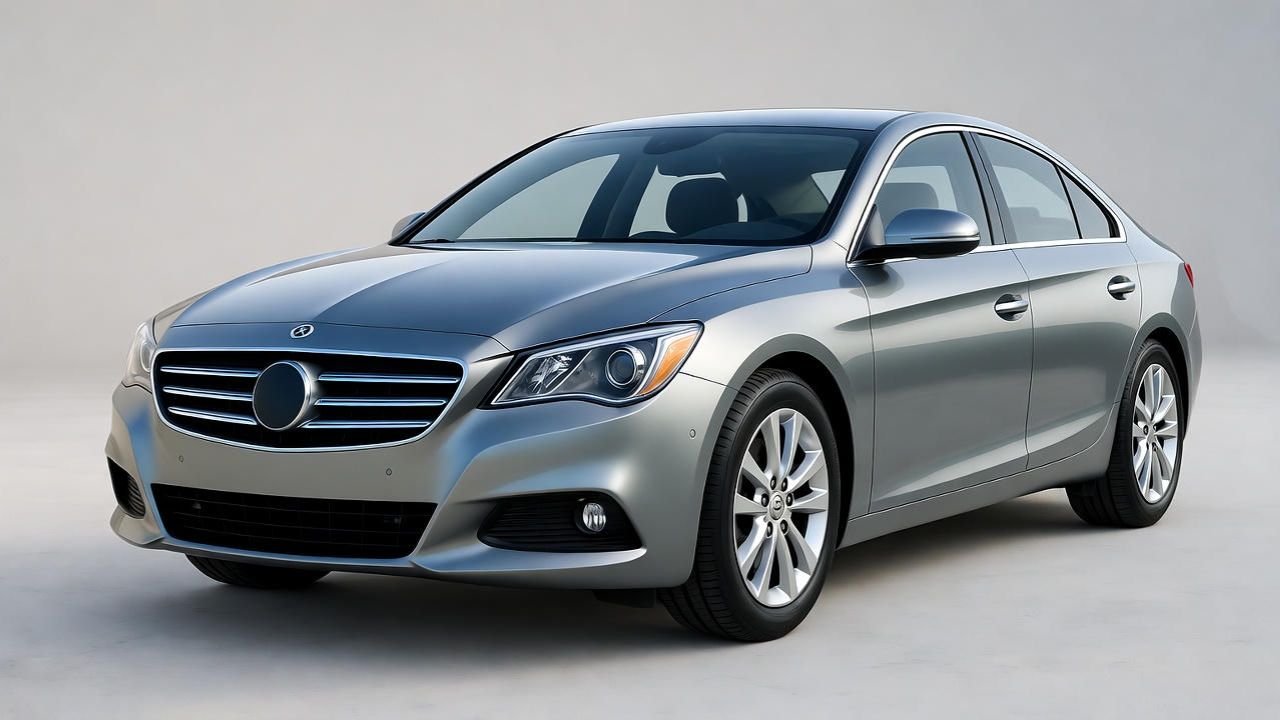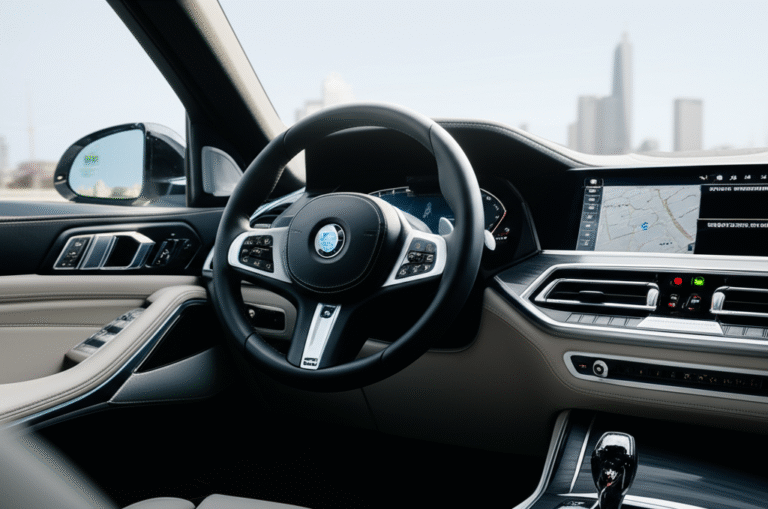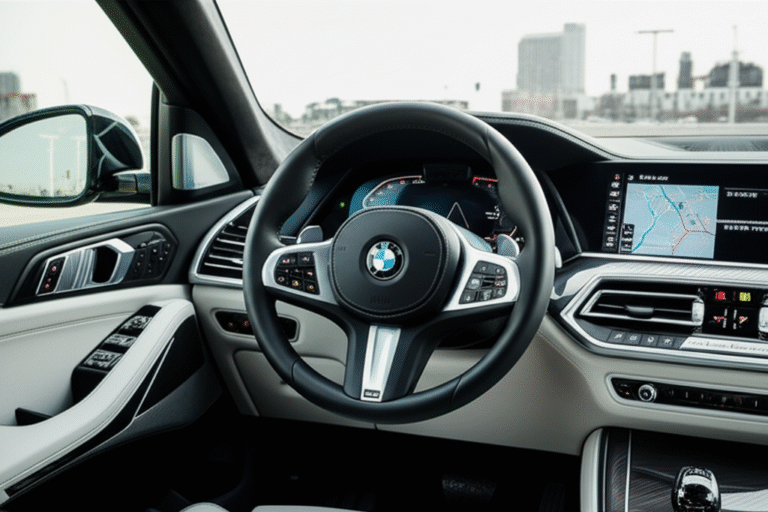BMW X1 Safety Rating: 7 Stunning Facts

The BMW X1 safety rating is impressive, with top scores from major safety organizations like the IIHS and NHTSA, highlighting its advanced protection systems and robust engineering for a confident driving experience.
Key Takeaways
- Earns high marks in crash tests.
- Features advanced driver-assistance technologies.
- Offers excellent occupant protection.
- Prospective buyers trust its safety credentials.
- Maintains a strong reputation for safety.
- Provides peace of mind on the road.
Navigating the world of automotive safety can feel overwhelming, especially when you’re looking for a vehicle that prioritizes your well-being. You might be wondering about the BMW X1’s safety performance. Is it as secure as it looks? We understand that knowing your car’s safety rating is crucial for making informed decisions, whether you’re a seasoned driver or new to the road here in the USA. This guide will break down the BMW X1 safety rating into seven clear, easy-to-understand facts. Get ready to discover just how protected you are behind the wheel of this popular luxury compact SUV.
Understanding Automotive Safety Ratings in the USA

In the United States, two primary organizations evaluate vehicle safety: the National Highway Traffic Safety Administration (NHTSA) and the Insurance Institute for Highway Safety (IIHS). NHTSA, a government agency, provides a star rating system from one to five stars, with five being the safest. Their tests cover frontal crashes, side crashes, and rollover resistance. The IIHS, an independent, non-profit organization funded by auto insurers, conducts more rigorous testing, awarding “Good,” “Acceptable,” “Marginal,” or “Poor” ratings in various crashworthiness categories and offering “Top Safety Pick” and “Top Safety Pick+” designations. Understanding these ratings is the first step in appreciating a car’s safety features.
BMW X1 Safety Rating: 7 Stunning Facts Revealed
Let’s dive into the specifics of what makes the BMW X1 a strong contender in the safety department. These facts are based on current assessments and highlight the engineering and technology that contribute to its protective capabilities.
Fact 1: Top-Tier Performance in IIHS Crashworthiness Tests
The BMW X1 consistently earns high marks from the IIHS. For many model years, it has achieved “Good” ratings in all six major crashworthiness tests, including the challenging small overlap frontal (driver and passenger side), moderate overlap frontal, side, roof strength, and head restraint tests. This means the X1’s structure is exceptionally effective at managing crash forces across a wide range of impact scenarios. The “Good” rating is the highest possible, signifying superior design and material resilience.
Fact 2: Accolades from NHTSA – A Solid 5-Star Overall Safety Rating
When it comes to NHTSA’s evaluation, the BMW X1 often receives an outstanding 5-Star Overall Safety Rating. This comprehensive assessment combines frontal crash tests, side crash tests, and a rollover resistance rating. A 5-star rating indicates that the X1 offers excellent protection to occupants in various crash situations, providing a high level of confidence to drivers and passengers. You can typically find these ratings on the NHTSA website, allowing for direct comparison with other vehicles.
Fact 3: Advanced Headlight Performance Contributes to Safety Pick+ Recognition
For a vehicle to be considered a “Top Safety Pick+” by the IIHS, it must not only perform well in crash tests but also offer excellent headlight performance and demonstrate a strong front-crash prevention system. The BMW X1 has frequently met these stringent requirements, with its available LED headlights often earning a “Good” or “Acceptable” rating. This is crucial because effective headlights significantly reduce the risk of accidents at night or in poor visibility, a common concern for drivers across the USA.
Fact 4: Standard and Available Driver-Assistance Technologies
Beyond passive safety (the protection offered during a crash), the BMW X1 excels in active safety features designed to prevent accidents altogether. Standard equipment often includes features like automatic emergency braking with pedestrian detection, lane departure warning, and a rearview camera. Available packages can further enhance safety with adaptive cruise control, blind-spot monitoring, rear cross-traffic alert, and parking assistance systems. These technologies act as a vigilant co-pilot, helping you avoid potential hazards.
Here’s a look at some common driver-assistance features and what they do:
| Feature | Description | Benefit |
|---|---|---|
| Automatic Emergency Braking (AEB) | Detects potential frontal collisions and automatically applies braking if the driver doesn’t react. | Reduces or avoids frontal impacts, especially at lower speeds. |
| Pedestrian Detection | Works with AEB to identify and react to pedestrians in the vehicle’s path. | Enhances safety for vulnerable road users, a growing concern in urban environments. |
| Lane Departure Warning (LDW) | Alerts the driver if the vehicle unintentionally drifts out of its lane. | Helps prevent accidents caused by driver distraction or fatigue. |
| Blind-Spot Monitoring (BSM) | Warns the driver of vehicles in their blind spots. | Improves safety during lane changes on busy highways. |
| Adaptive Cruise Control (ACC) | Adjusts vehicle speed to maintain a set distance from the vehicle ahead. | Reduces driver fatigue on long commutes and highway driving. |
Fact 5: Superior Occupant Protection in Side and Moderate Overlap Frontal Crashes
The structural integrity of the BMW X1 is a significant factor in its safety ratings. In side-impact tests, the X1’s reinforced structure and comprehensive airbag system—including front, side, and curtain airbags—help protect occupants from intrusion and injury. Similarly, in moderate overlap frontal tests, the vehicle’s design effectively manages impact forces, minimizing cabin deformation and protecting the driver and front passenger. This thorough protection is a hallmark of luxury vehicles designed with occupant well-being as a top priority.
Fact 6: Advanced Airbag Systems for Comprehensive Coverage
The BMW X1 is equipped with an advanced airbag system that provides comprehensive protection. This typically includes a multi-stage driver and front passenger airbag, front-seat side-impact airbags, and front and rear head protection curtain airbags. These airbags are designed to deploy strategically based on the severity of the impact, offering a crucial layer of cushioning and protection to occupants during a collision. The strategic placement and dual-stage deployment are key to their effectiveness.
Fact 7: Strong Safety Reputation Builds Trust for Buyers
For many consumers in the USA, a vehicle’s safety rating is a deciding factor. The BMW X1’s consistent high scores from both NHTSA and IIHS have helped build a strong reputation for safety. This reassures potential buyers that they are investing in a vehicle that prioritizes their well-being and that of their passengers. This trust is invaluable and contributes to the X1’s enduring popularity in a competitive segment of the automotive market. A good safety record can also influence insurance premiums, potentially offering savings for owners.
Pro Tip: Staying Informed About Recalls and Maintenance
Even the safest vehicles can sometimes have recall notices. It’s always a good practice to regularly check the NHTSA recall database using your vehicle’s VIN. Additionally, adhering to your BMW X1’s recommended maintenance schedule is vital for ensuring its safety systems continue to function optimally.
Understanding Real-World Safety: Beyond the Ratings
While safety ratings are excellent indicators, it’s important to remember they are based on standardized tests. Real-world driving conditions can be far more varied. This is where the combination of passive safety (the car’s ability to protect you in a crash) and active safety (the car’s ability to help you avoid a crash) becomes paramount. The BMW X1’s commitment to advanced driver-assistance systems, coupled with its robust crash structure, provides a well-rounded approach to safety that aims to protect you in a multitude of scenarios. Think of the active safety features as your car’s “eyes and ears,” constantly working to keep you out of harm’s way, while the passive safety features are your ultimate line of defense should an incident occur.
The Role of Technology in Modern Automotive Safety
The automotive industry, particularly in the USA, is at the forefront of technological innovation, and safety is a major beneficiary. Features like advanced sensor arrays (radar, cameras, ultrasonic sensors), sophisticated software algorithms, and intelligent braking systems are transforming how vehicles protect occupants. The BMW X1 incorporates many of these advancements, reflecting the brand’s dedication to integrating cutting-edge technology for enhanced safety. This continuous evolution means that newer models often offer even more sophisticated safety solutions than their predecessors.
What to Look for When Buying a BMW X1 (Safety Perspective)
When exploring different BMW X1 models, consider these safety-focused points:
- Model Year: Newer model years often feature the latest safety technologies and structural improvements.
- Trim Levels and Packages: Some advanced safety features might be standard on higher trims or available as optional packages. Carefully review what’s included.
- IIHS and NHTSA Ratings: Always check the specific safety ratings for the exact model year you are interested in, as they can vary. You can find detailed reports on the IIHS website and the NHTSA website.
- Test Drives: Pay attention during your test drive to how the driver-assistance systems feel and function. Do they offer helpful alerts without being overly intrusive?
Frequently Asked Questions About BMW X1 Safety
Q1: Does the BMW X1 have good safety ratings?
Yes, the BMW X1 typically receives excellent safety ratings from both the IIHS and NHTSA, frequently earning Top Safety Pick designations and 5-Star Overall Safety Ratings.
Q2: What active safety features does the BMW X1 come with as standard?
Standard active safety features often include automatic emergency braking with pedestrian detection and lane departure warning. Always check the specifications for the specific model year and trim you are considering.
Q3: Are there optional safety features available on the BMW X1?
Yes, BMW often offers optional packages that can include features like adaptive cruise control, blind-spot monitoring, rear cross-traffic alert, and more advanced parking assistance systems.
Q4: How does the BMW X1 perform in crash tests?
The BMW X1 generally scores “Good” in all major IIHS crashworthiness tests, including small overlap frontal, moderate overlap frontal, side, roof strength, and head restraints, indicating superior structural integrity.
Q5: Is the BMW X1 a safe car for families?
With its high safety ratings, comprehensive airbag system, and advanced driver-assistance technologies, the BMW X1 is considered a very safe vehicle for families.
Q6: Where can I find the official safety ratings for a BMW X1?
You can find official safety ratings on the websites of the National Highway Traffic Safety Administration (NHTSA) at nhtsa.gov and the Insurance Institute for Highway Safety (IIHS) at iihs.org.
Conclusion
The BMW X1 safety rating stands out, consistently demonstrating a commitment to protecting its occupants through intelligent design and advanced technology. From its impressive performance in rigorous crash tests by the IIHS and NHTSA to its suite of standard and available driver-assistance systems, this luxury compact SUV offers a reassuringly secure driving experience. Understanding these seven facts empowers you to make a confident decision, knowing that the BMW X1 is engineered with your safety as a top priority, aligning perfectly with the high standards of automotive innovation found in the USA.




